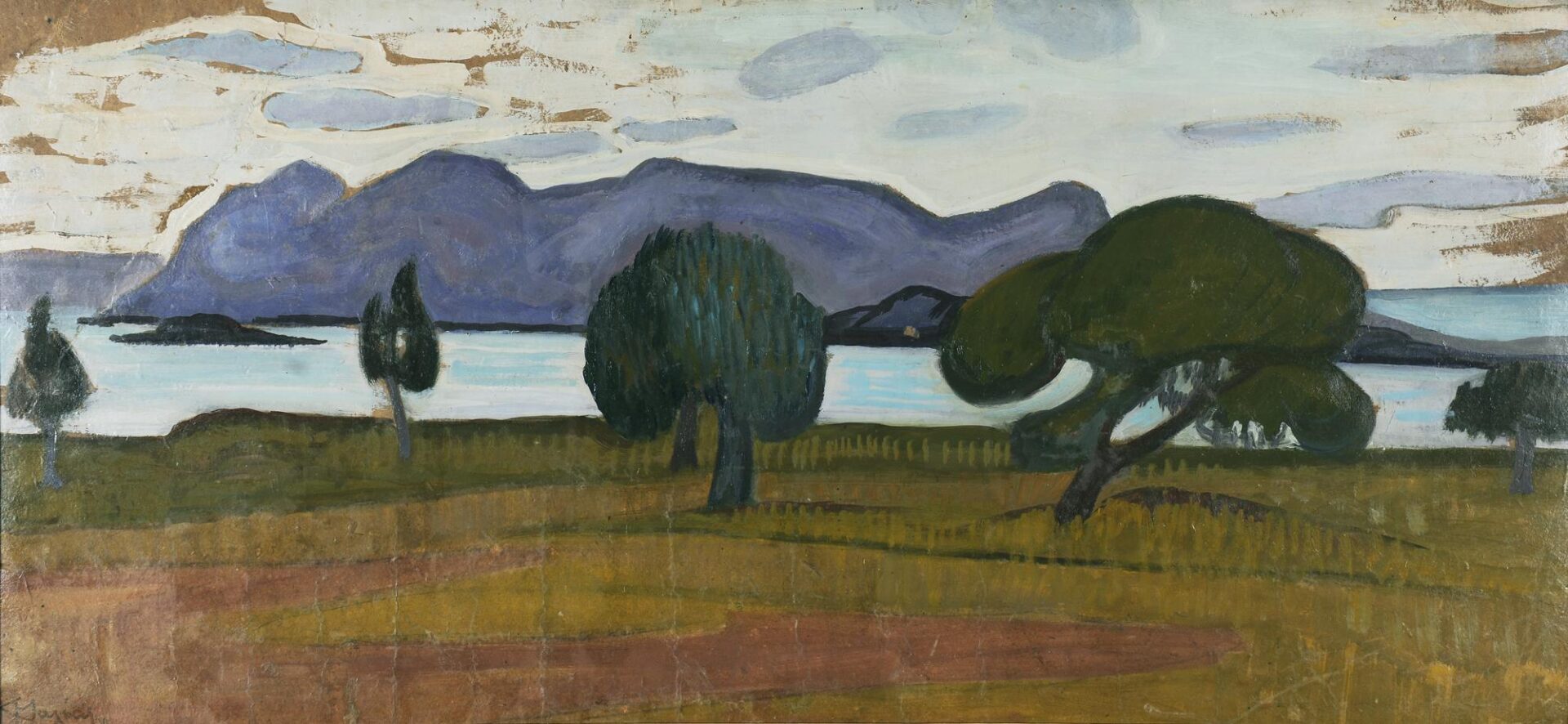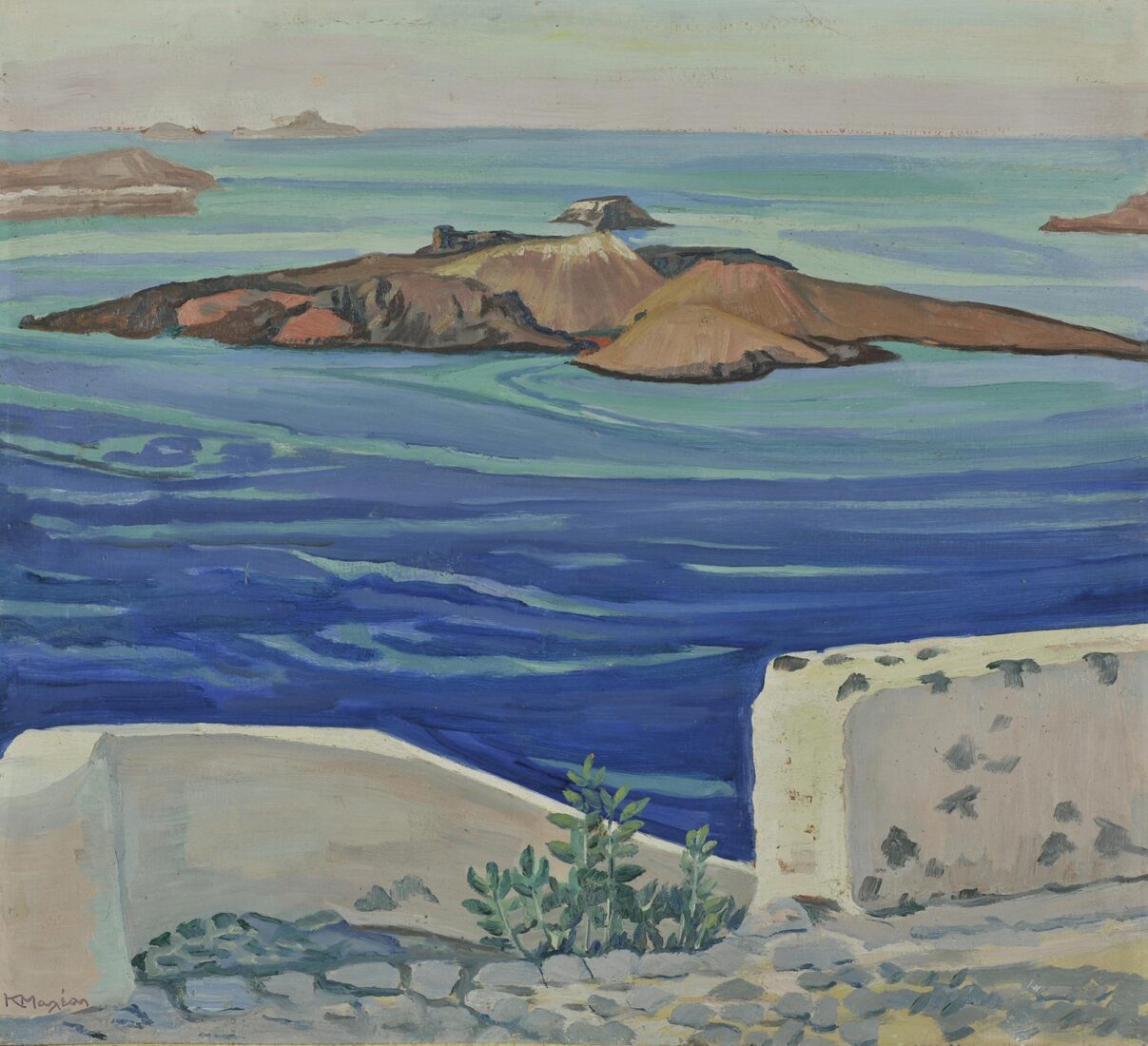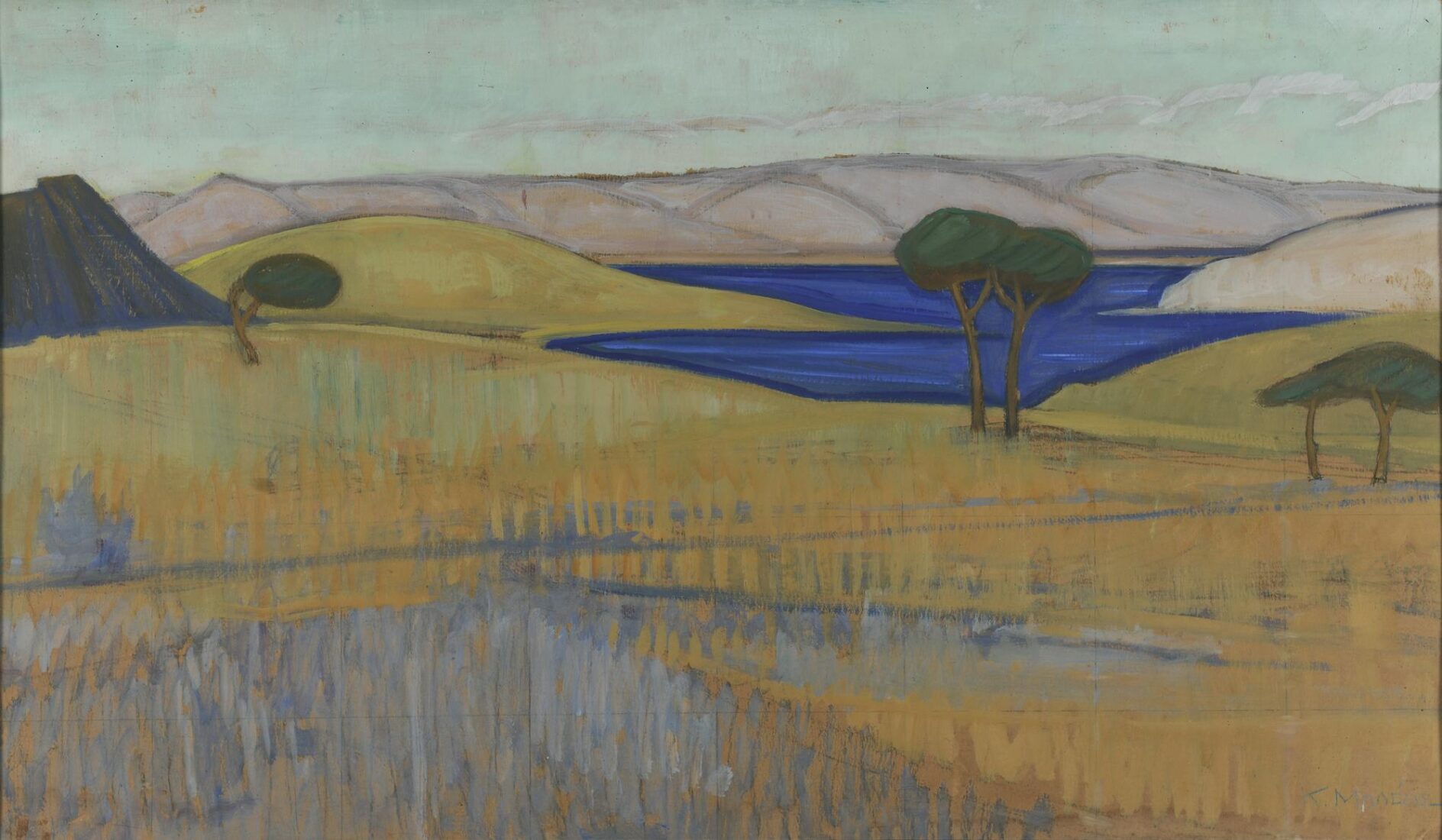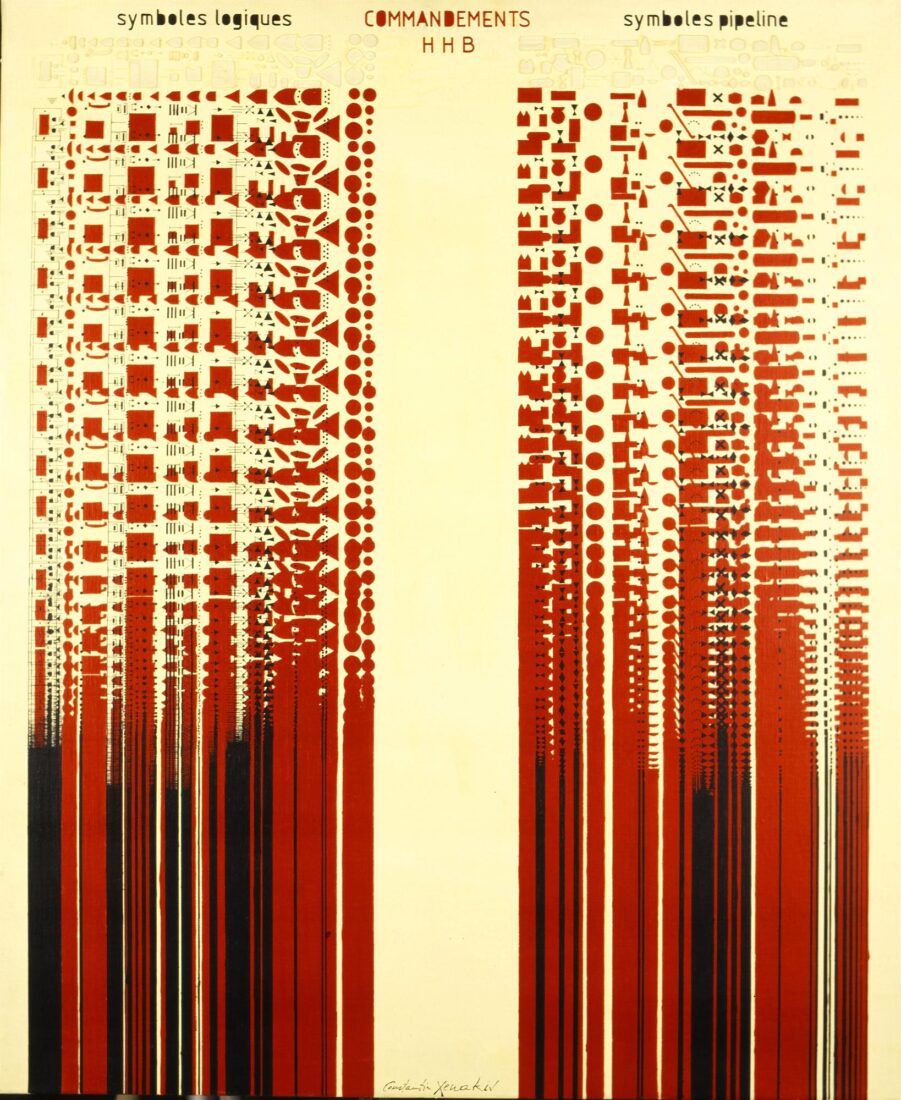

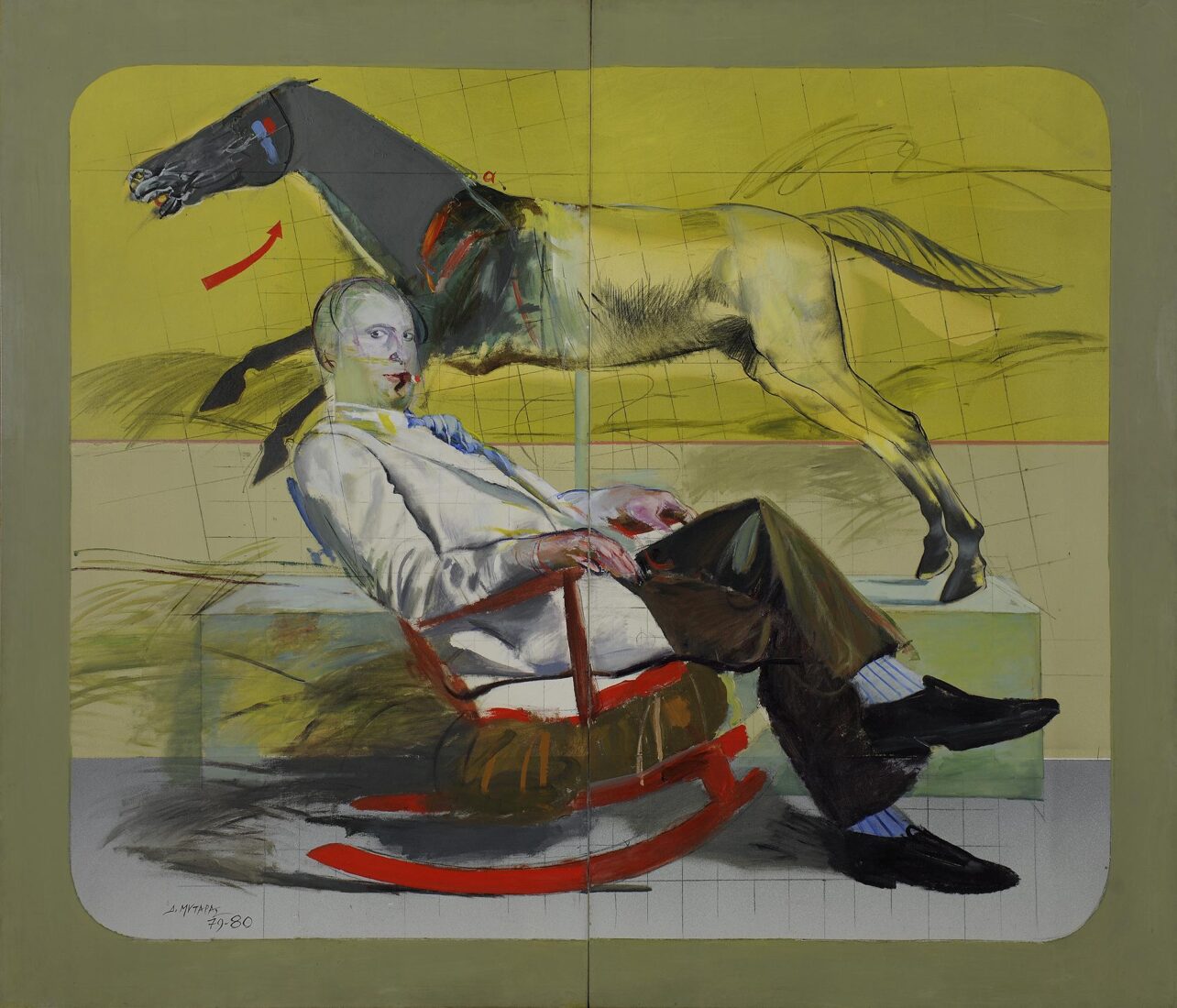
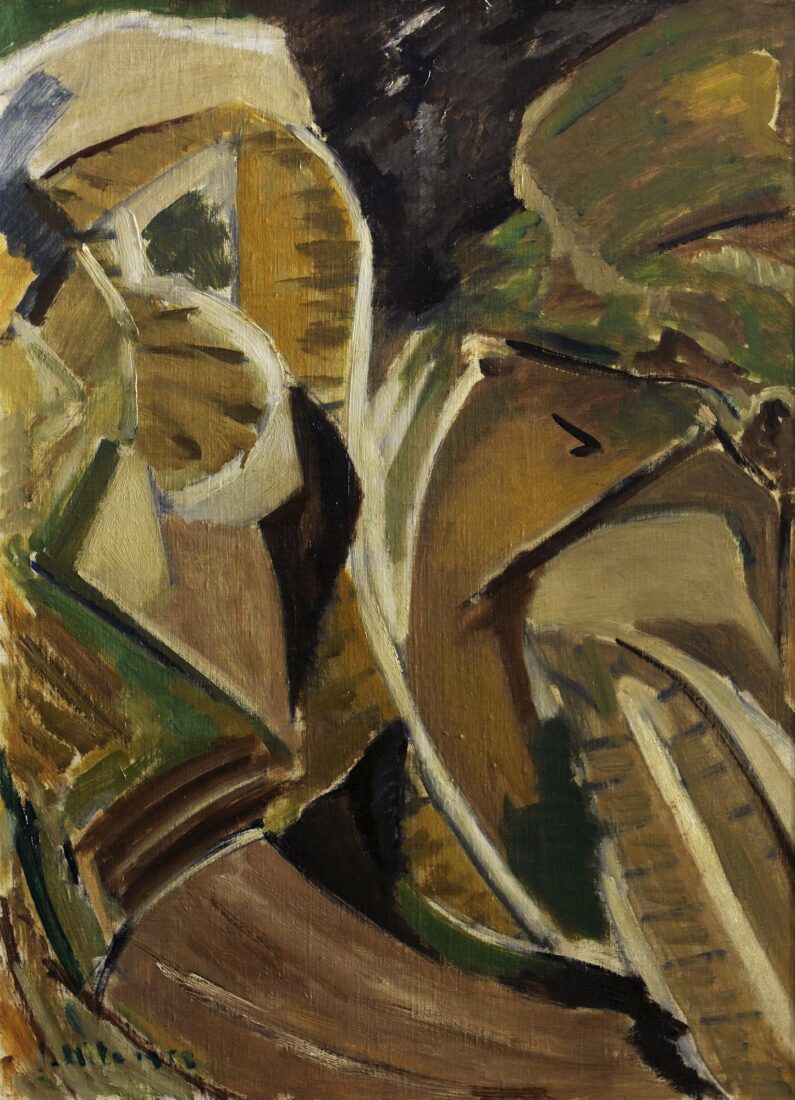
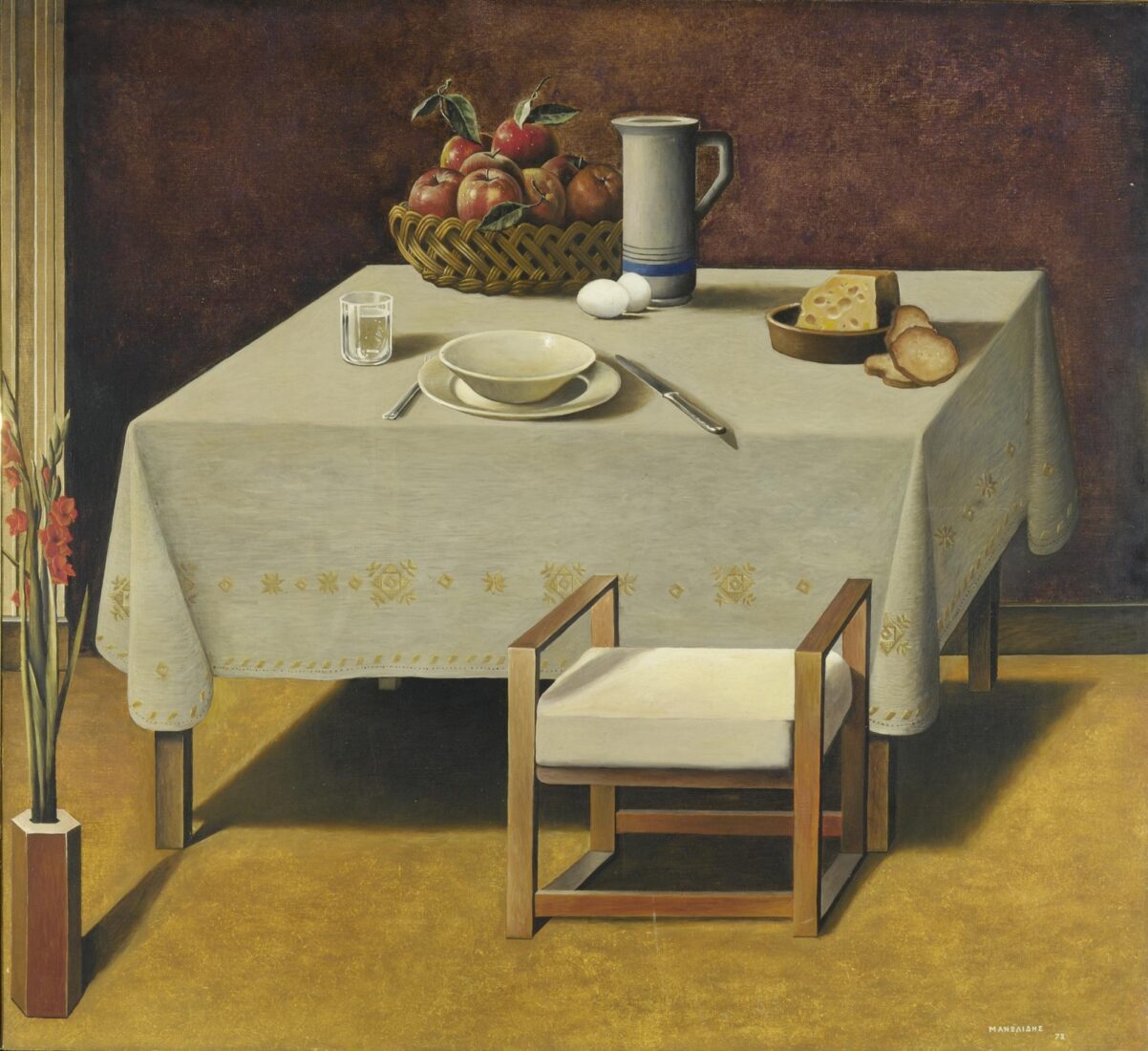
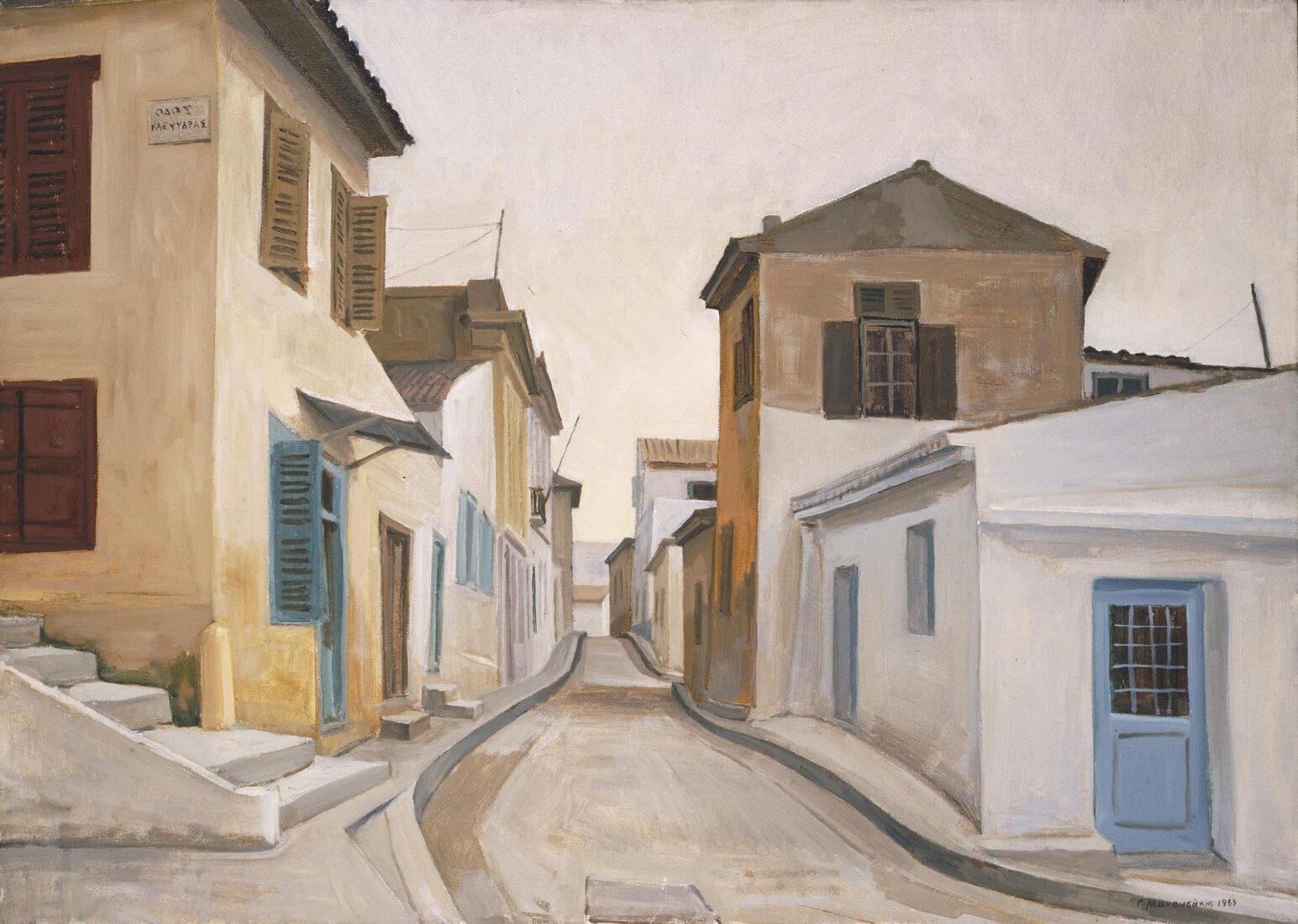
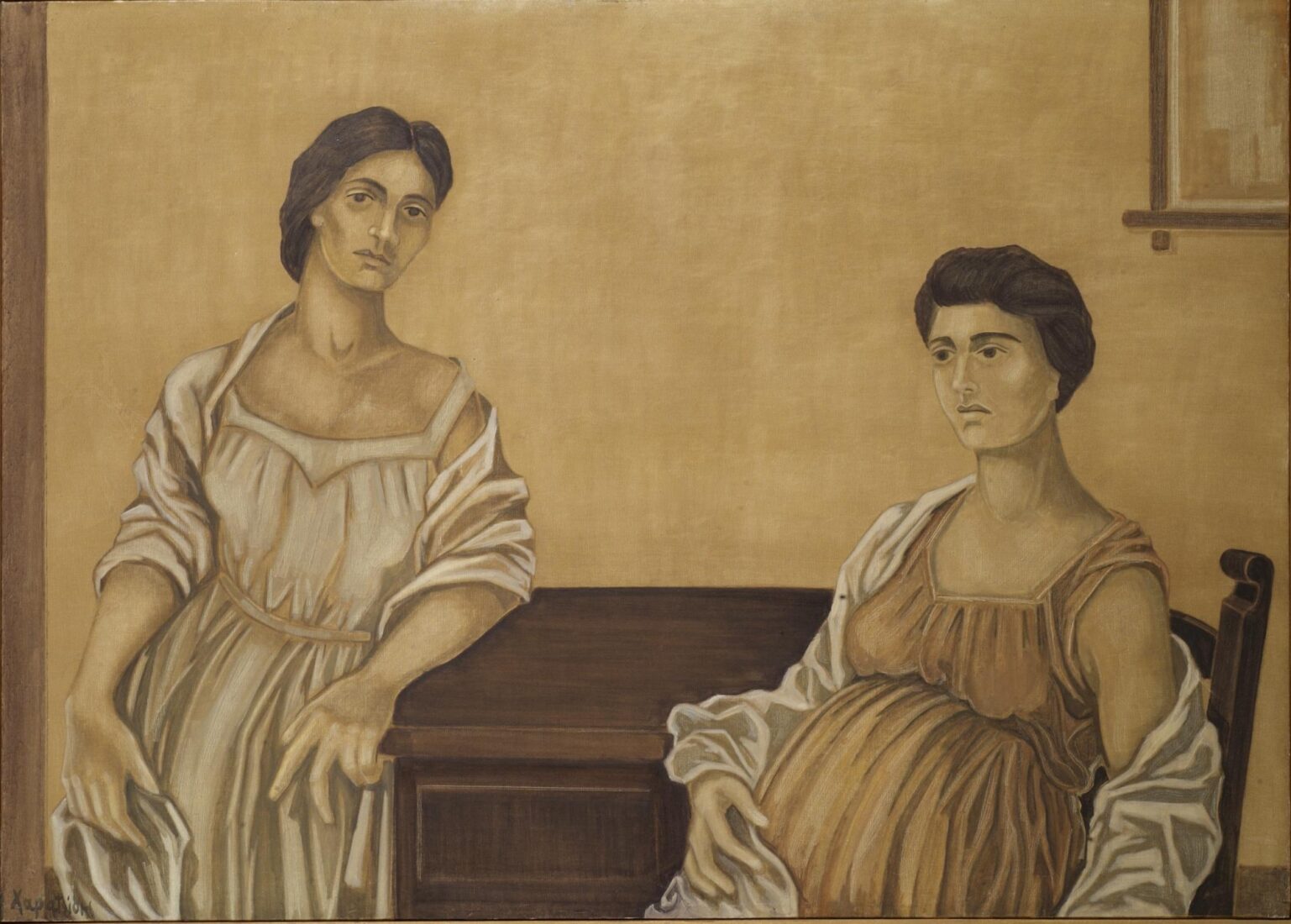
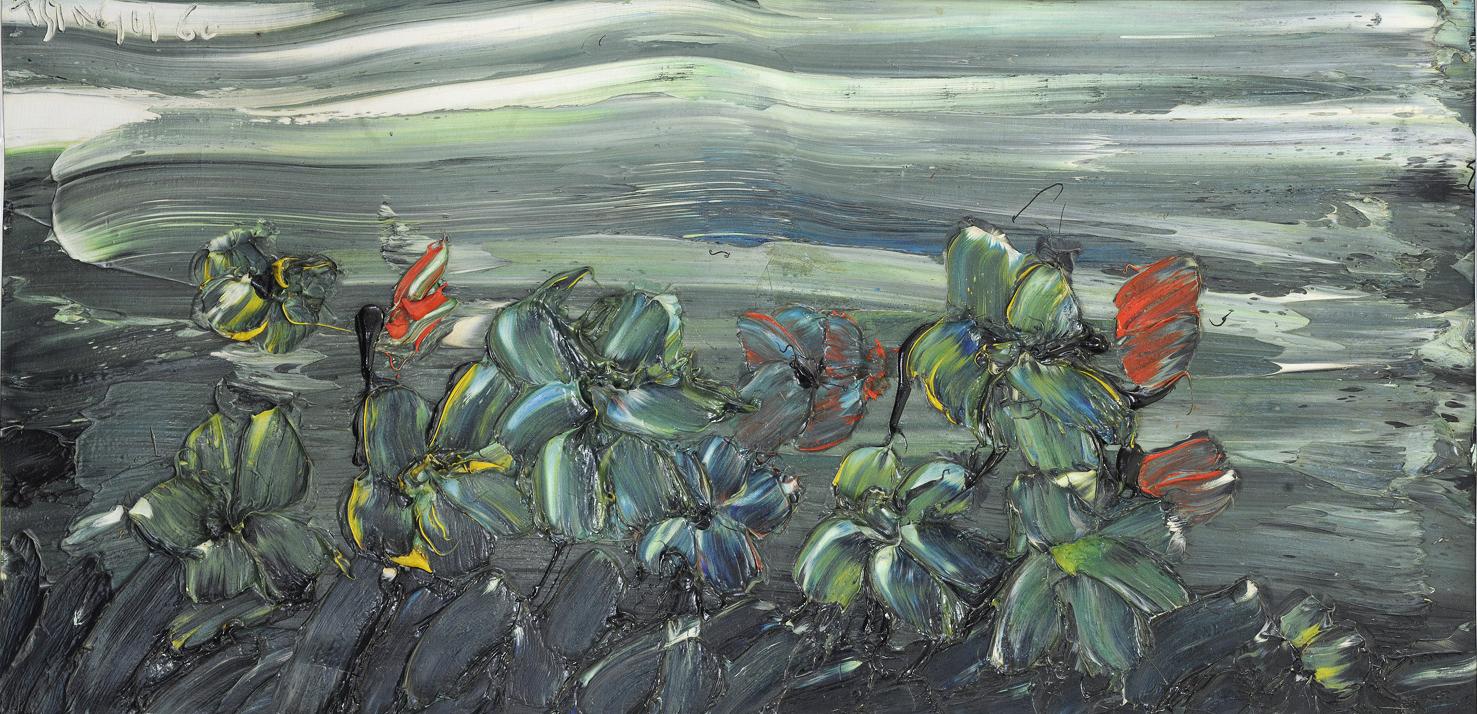
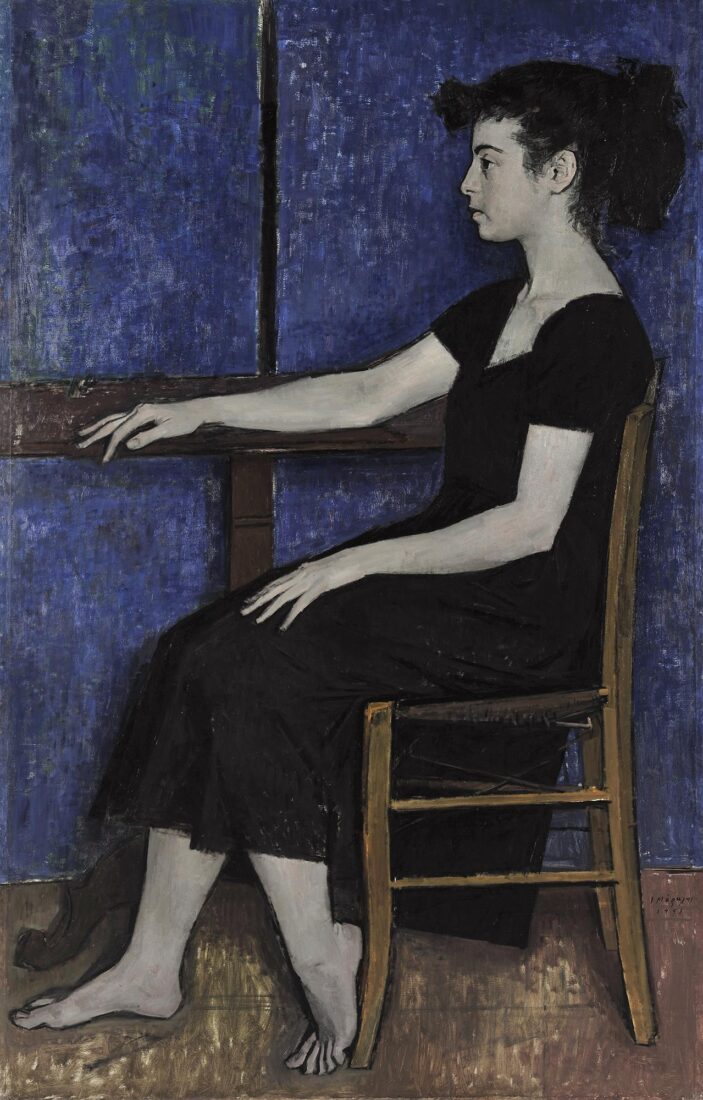
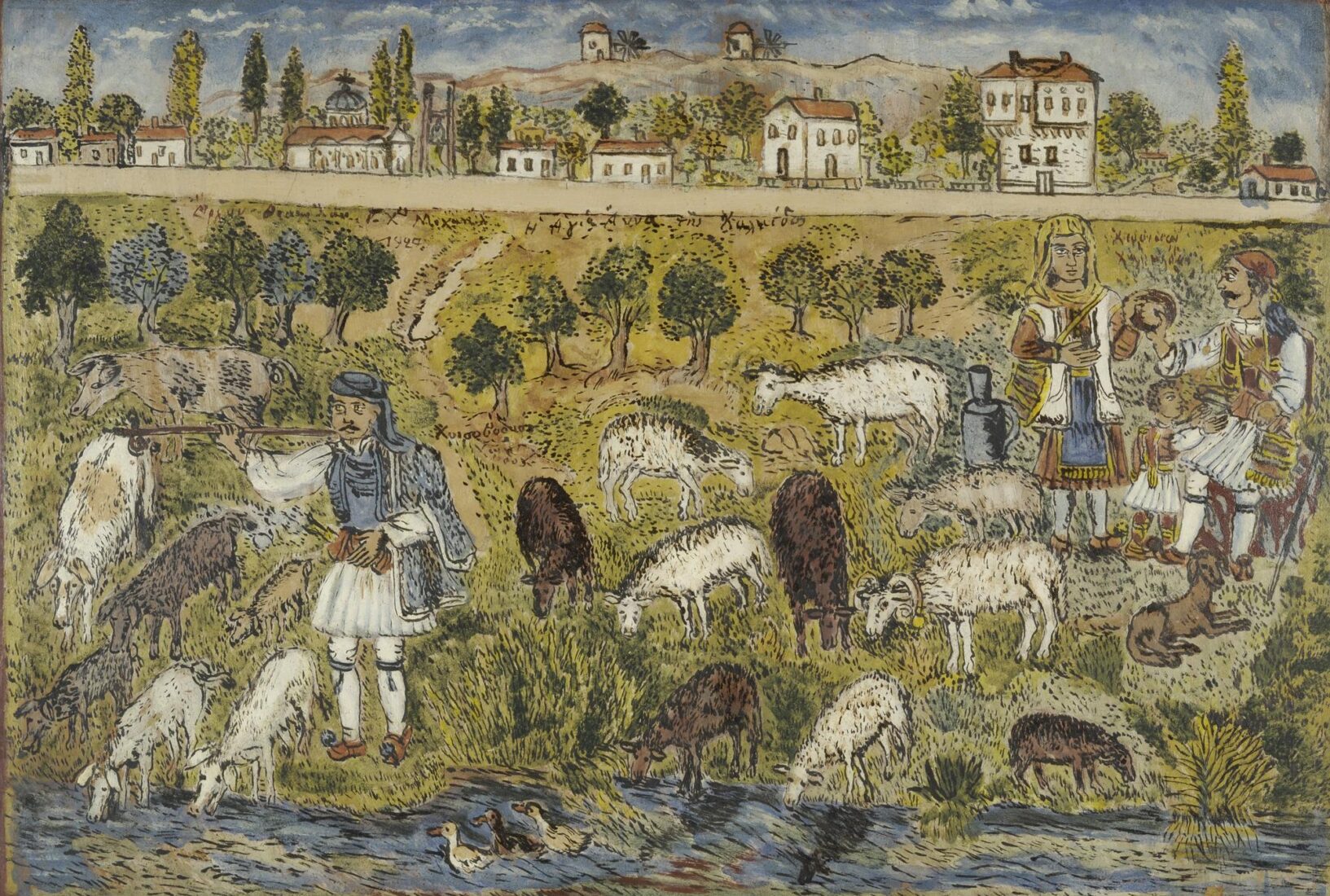
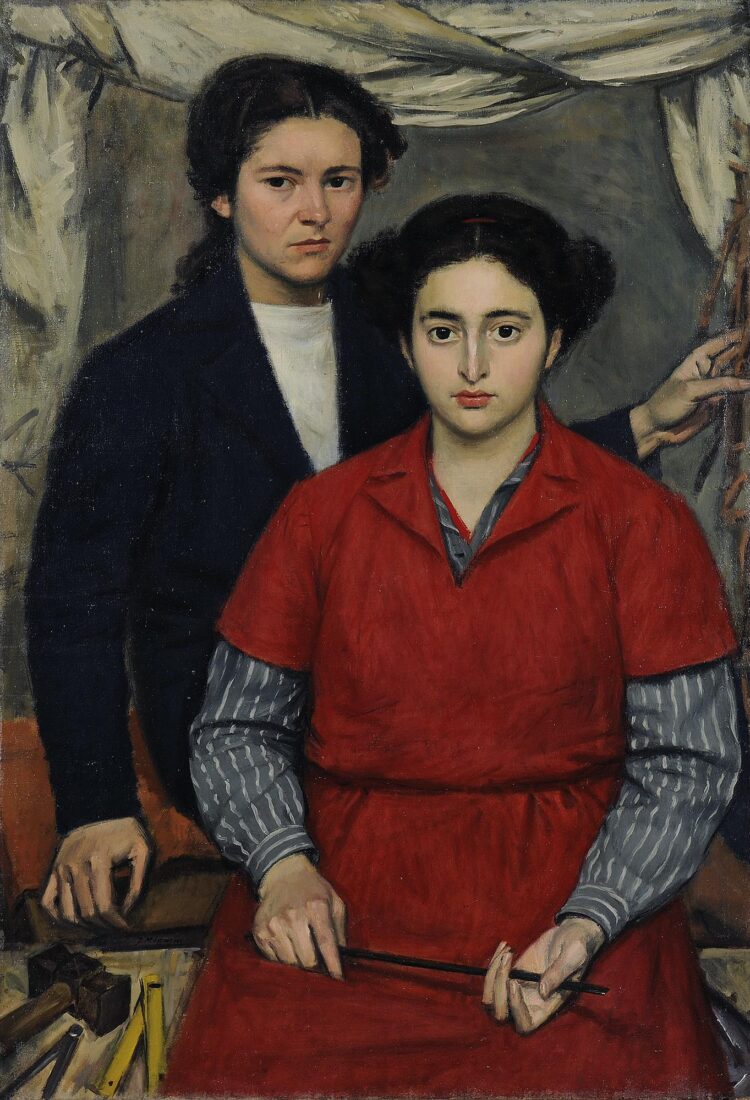
“”Two Girl Friends”” is one of the paintings inspired by the Fayum tradition as well as Renaissance portraiture and Derain’s works in a similar vein. It unmistakably carries the classical spirit of Moralis’ art. It also presupposes his lessons from Cubism in specific details. The two friends are young sculptors: Buba Lymberaki, who was to become Moralis’ second wife, and Natalia Mela (in the red dress). The artist has set them in frontal poses in a space without depth, enclosed by a screen. The pose, the gaze – mesmerising the viewer – time, which seems frozen, even the manner in which the figures have been painted, all invoke eternity: the privilege of classical art.
The painting background is greenish, adding glow to the red dress (red is the complementary colour of green). Lymberaki’s black coat, her white blouse, the other girl’s grey striped shirt, all add to the austere harmony of the composition, further enhancing the only vivid colour, red.
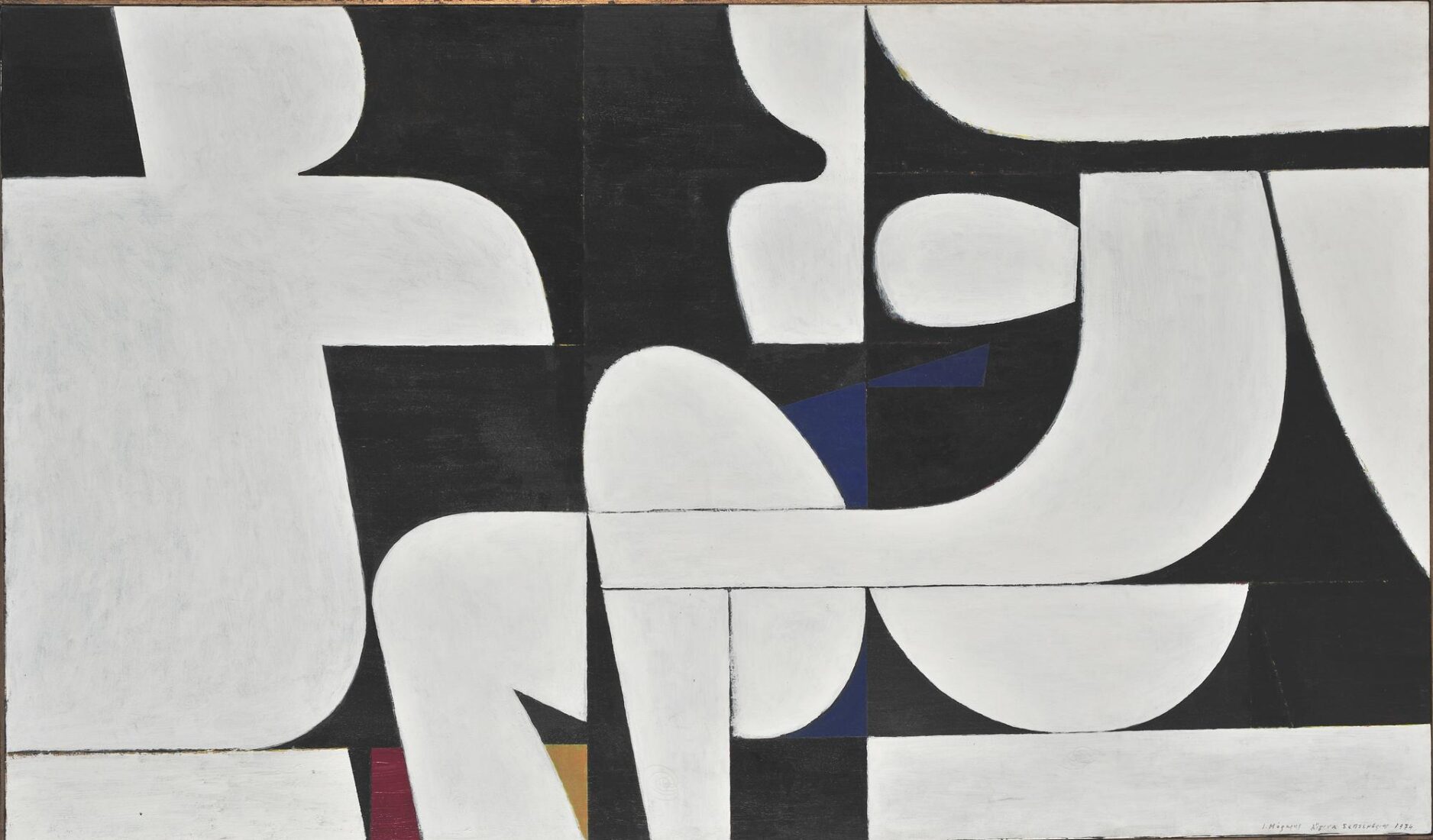
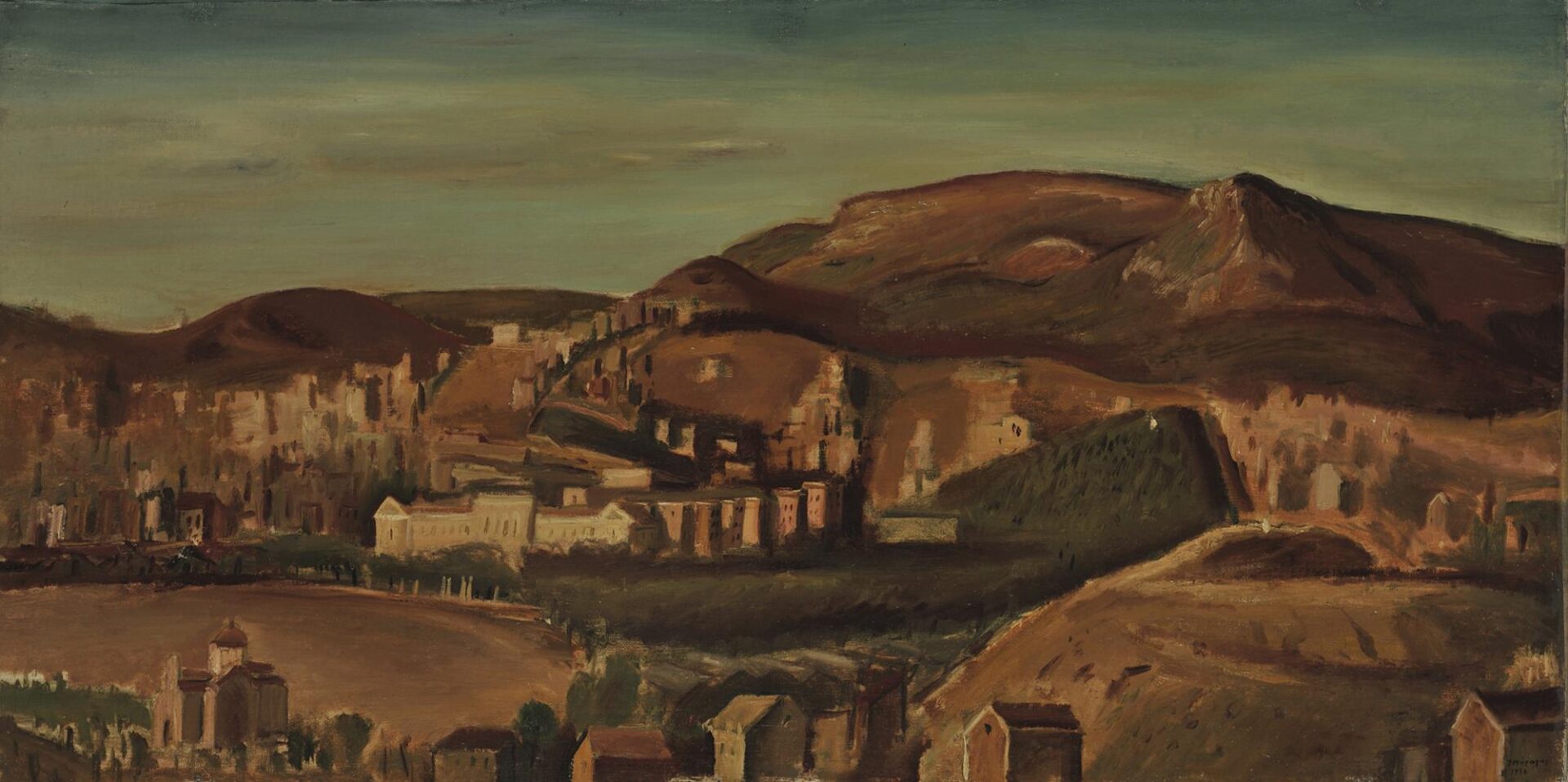
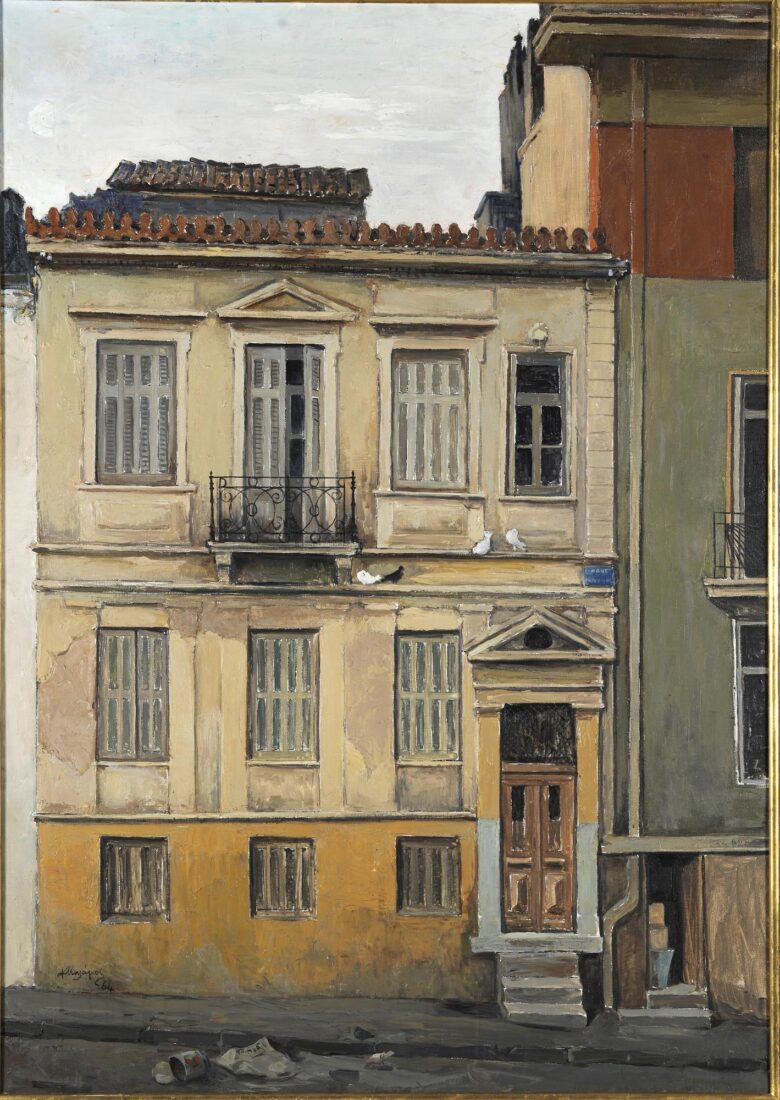
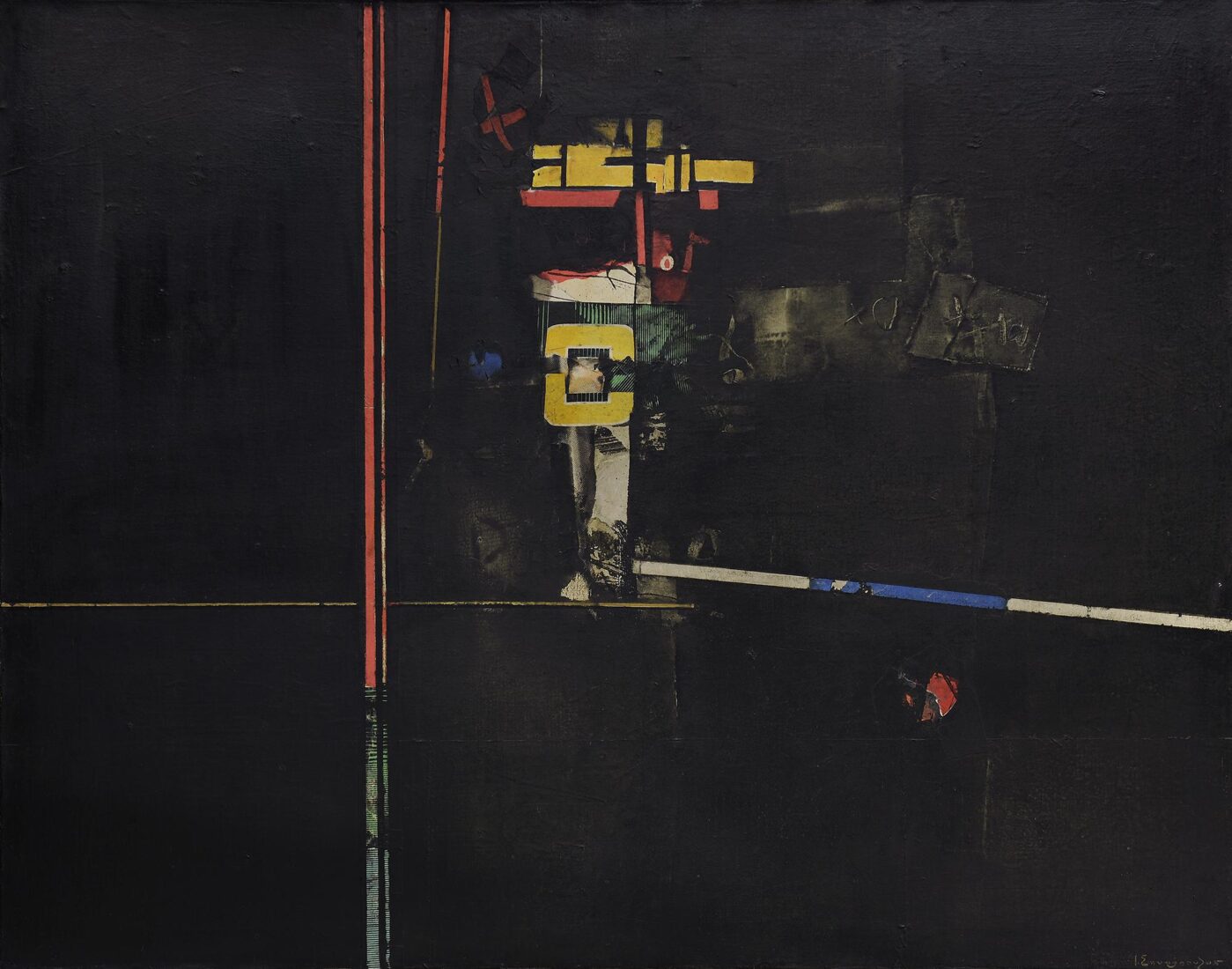
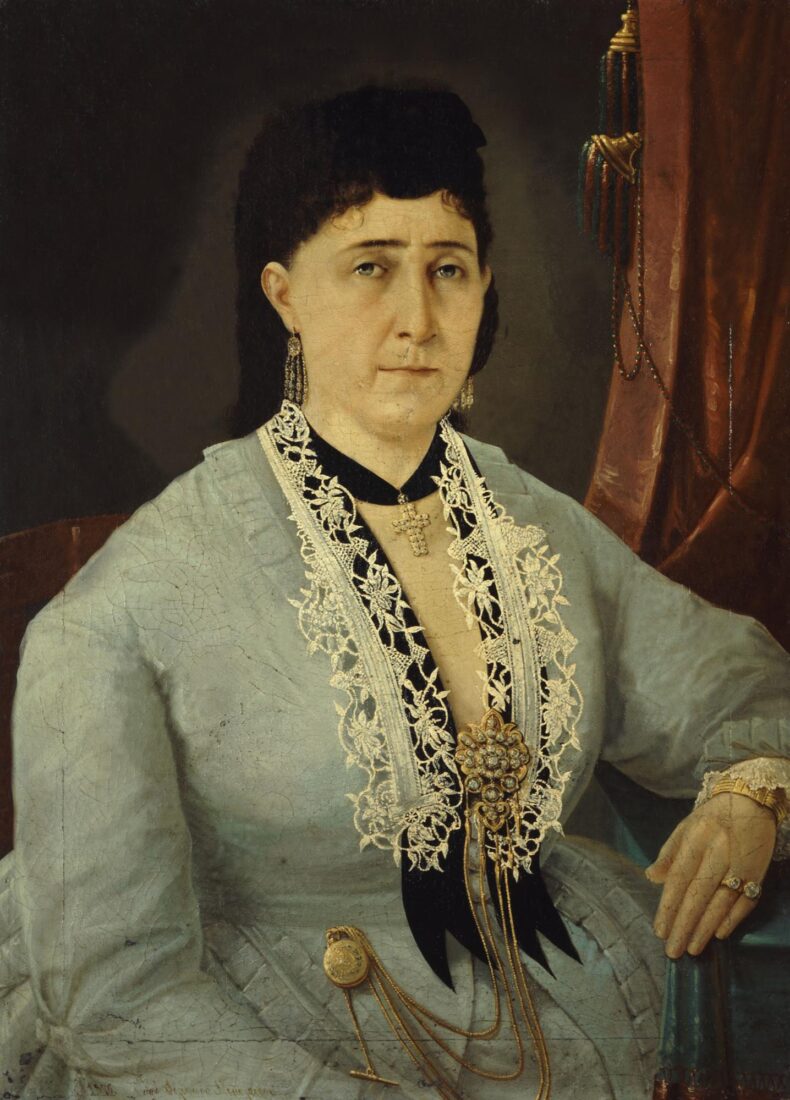
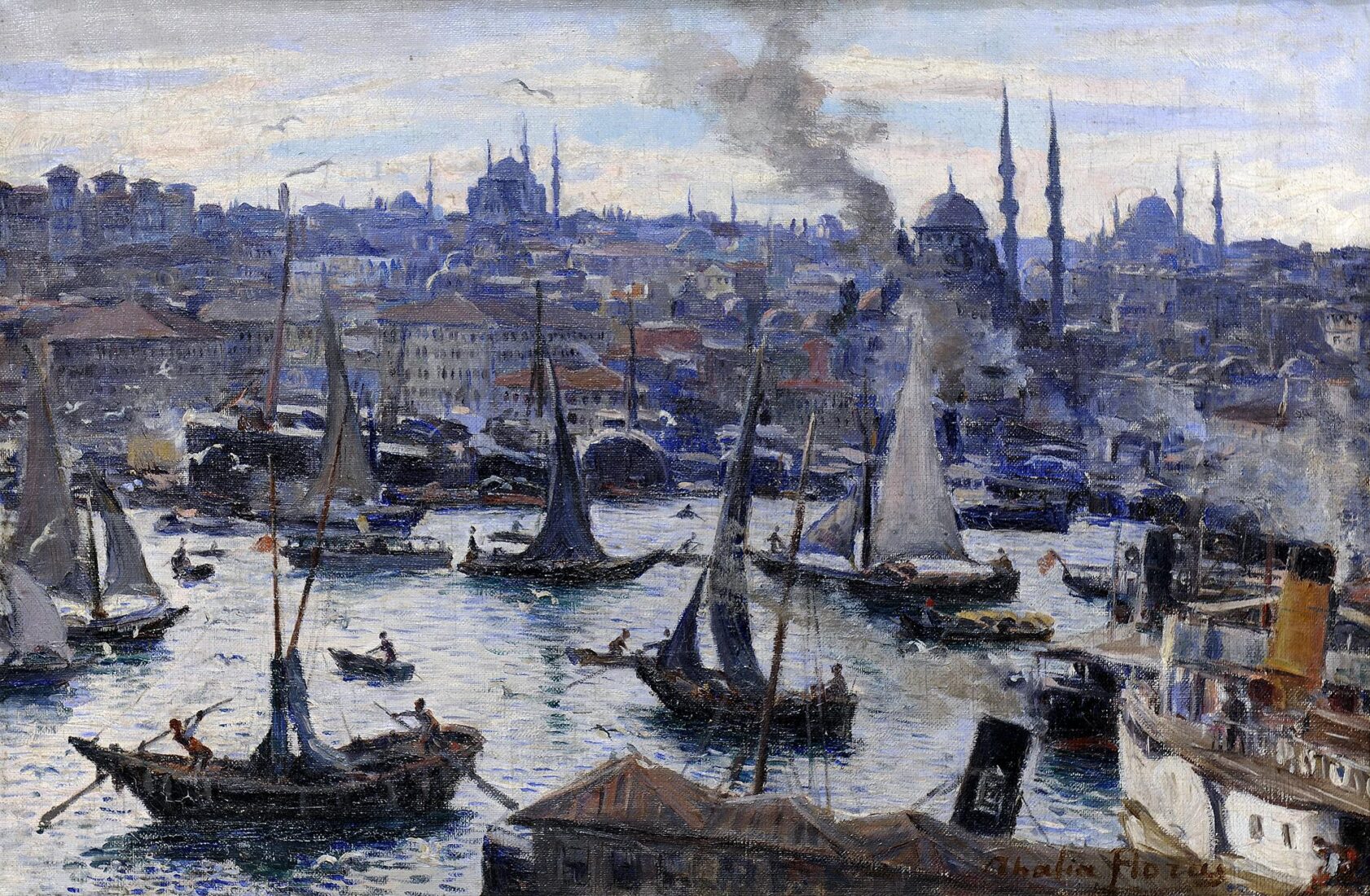
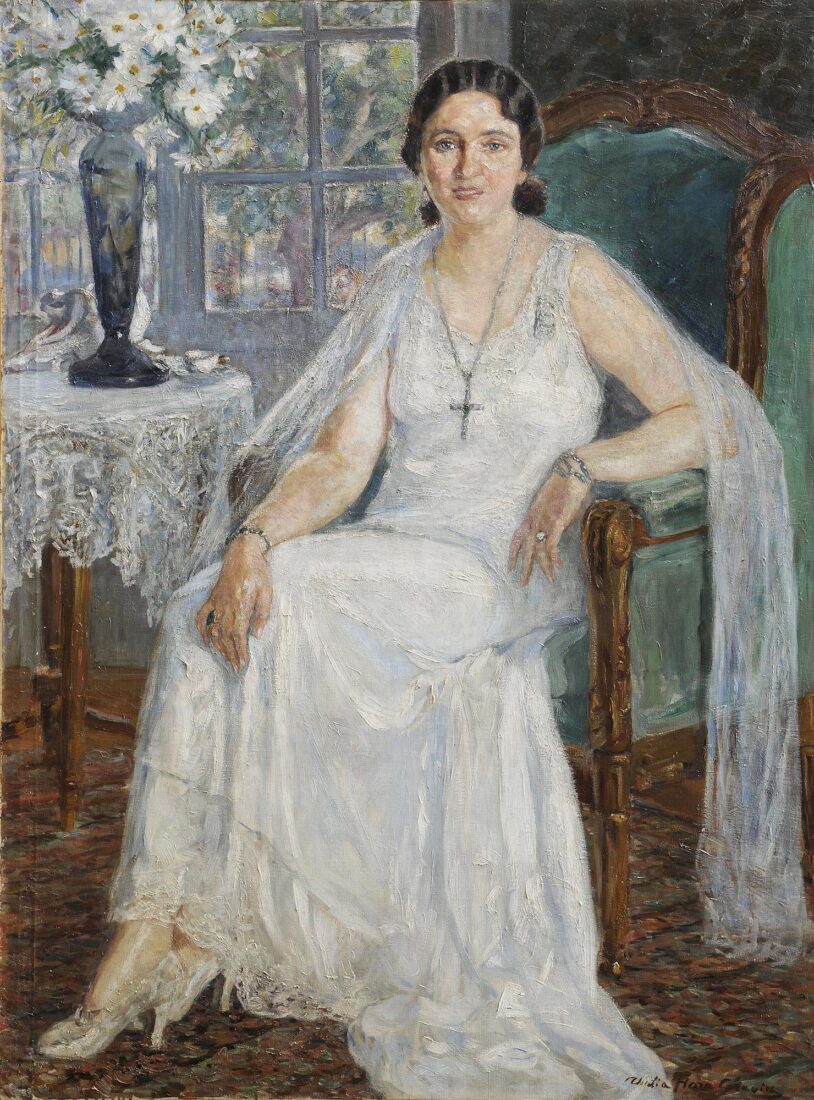
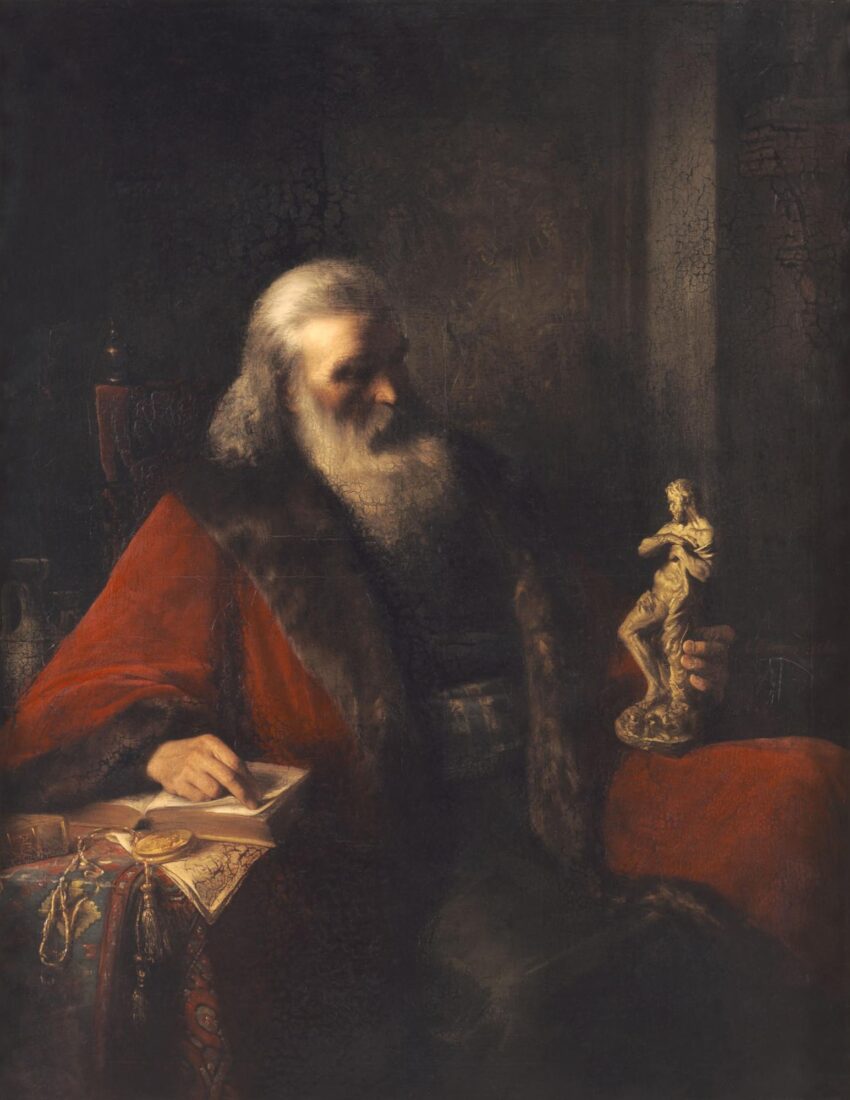
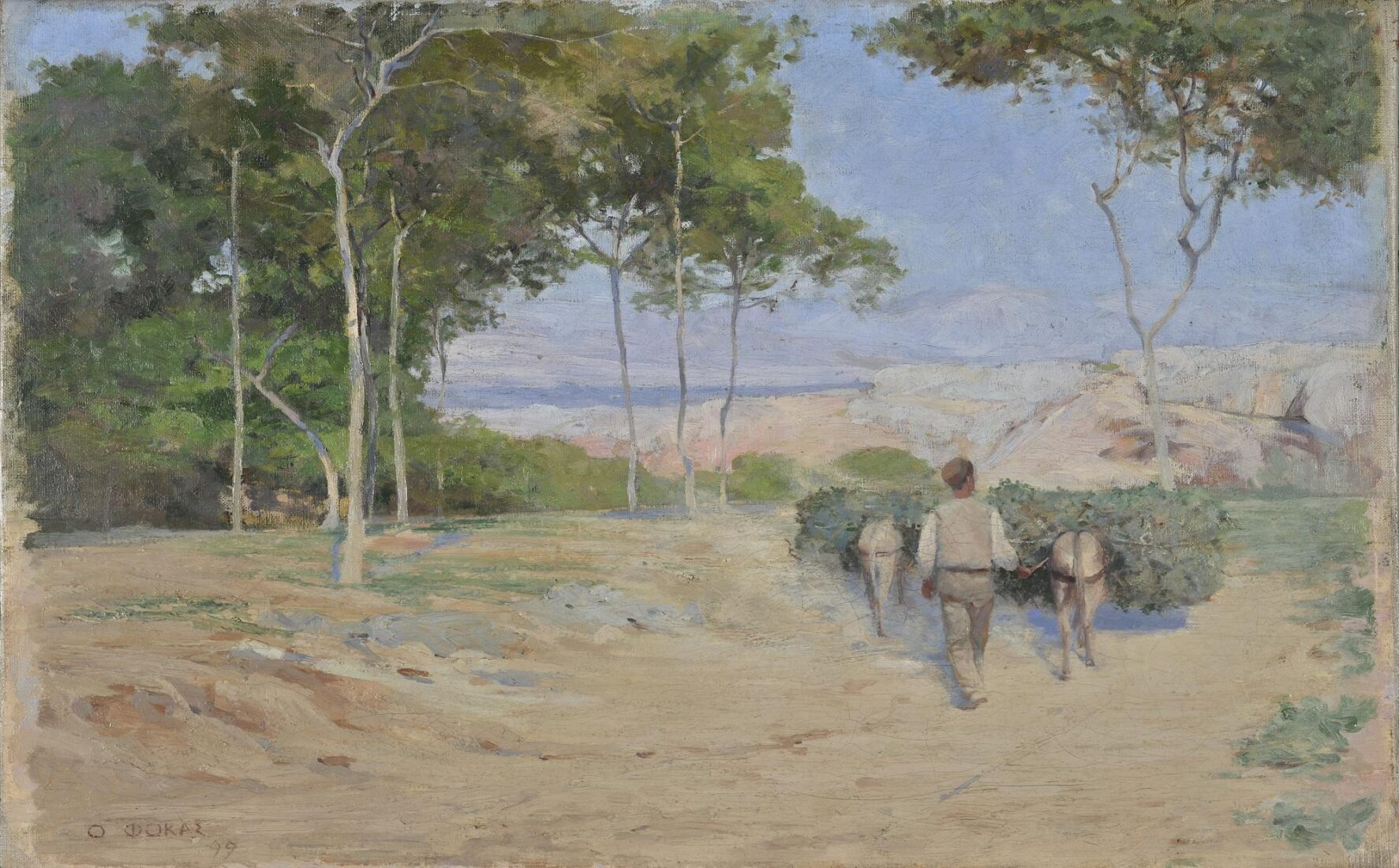
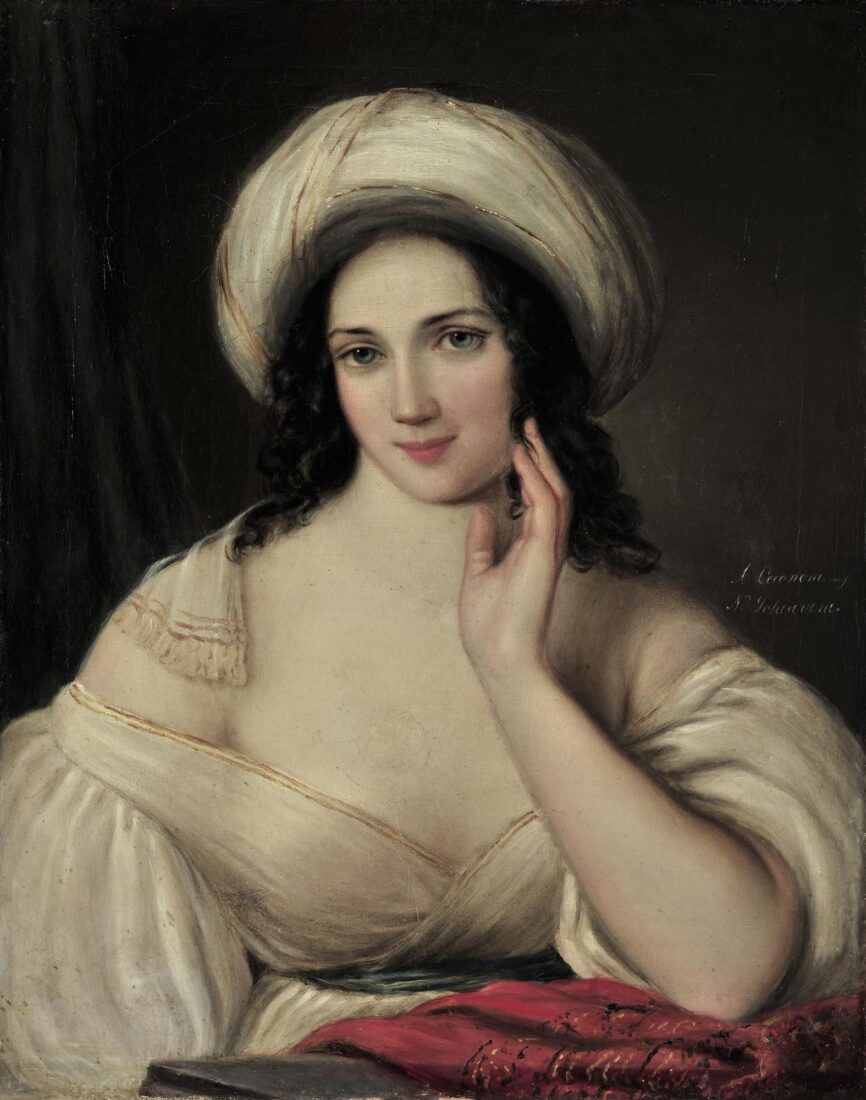
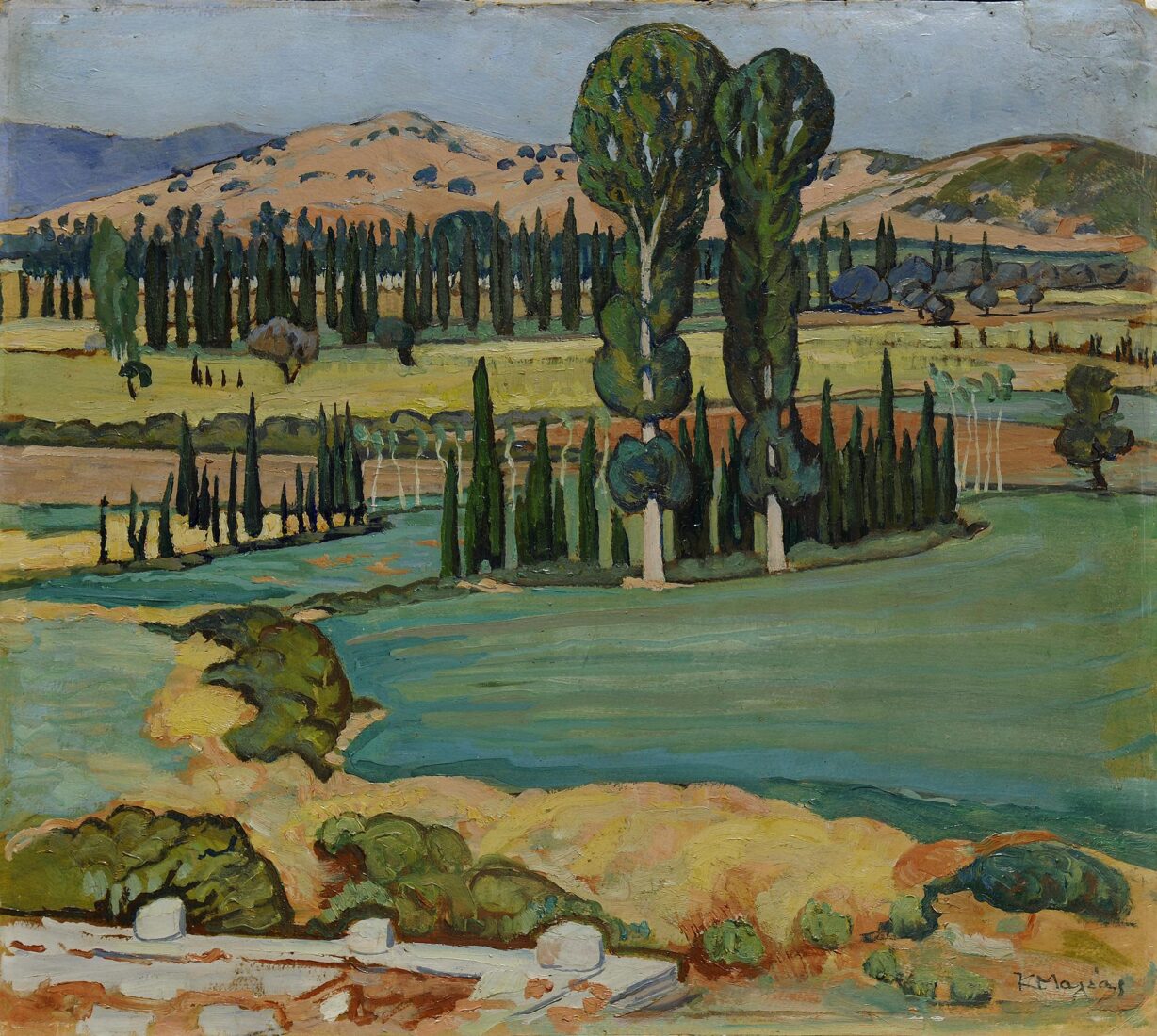
The painting shows a serene plain of green fields and yellow hay stacks, reaching to the low hills in the background. Horizontal bands of tall poplar and cypress trees multiply the effect of the immense landscape. In the foreground, the painter has depicted the remains — the platform with the column bases — of the renowned archaic temple of Thermos. This foreground plane operates in a similar manner to the screens placed by set designers in the foreground of the theatrical stage. Maleas works with a denser, more pasted colour than Parthenis. Both of them, however, reject the effect of depth. How? By maintaining the intensity of colour even in the furthest planes. Thus, the image is kept within the canvas surface. Note the colours: In order to achieve the effect of a cool plain, the painter emphasises the green, conversing with the yellowy ochre and brown of the ploughed fields and the hills. Maleas loves curvilinear patterns, which he was taught by the Symbolists and Art Nouveau*, that is, the dominant style in Europe around 1900.
